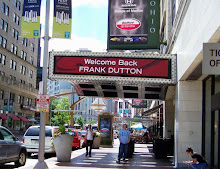This article originally appeared in the Bridge Line Bulletin, April 2009.
Pay Day Was Late
By Frank Dutton
Monday, October 9, 1933 was payday for the Hudson Coal Company employees. The Hudson Company pay car was at the Marvine Colliery about noon that day, leaving sometime after the lunch hour. Operating the train, pulled by D&H camelback number 456, was engineer James Monroe and fireman William H. Harrison, both from Carbondale. The train was made up of only the wooden pay car number 652. This was a routine run for Monroe, for the last seven years part of his job with the D&H was the pay day train.
Conductor Peter French was standing in the vestibule door as the train passed the Green Ridge yard office about 1:38 PM. He watched as the train made its way south, passing the Lackawanna’s Diamond Branch and CJ tower at Carbon Street. Inside the car Hudson Coal Company employees attended to their duties. Shortly thereafter, about 1:42 PM, French felt the car lurch as the train neared the Mulberry Street Bridge. French shouted a warning as the train rocked to the left, then flipped onto its side. Inside the pay car workers were thrown about.
As the locomotive started to flip on its side, engineer Monroe jumped to safety. Unfortunately, fireman Harrison wasn’t so lucky; he was trapped in the rear cab. The workers in the pay car attempted to free themselves as police and firemen rushed to the scene. Within minutes hundreds of onlookers crowded the area, hanging from nearby bridges above the tracks on Mifflin Street, and even from the O&W tracks along the west bank of the Lackawanna River. Reaching the scene, firemen used ladders to climb down the wall from Mifflin Street, breaking windows in the pay car to extricate the workers. As the pay car employees were being rescued, firemen worked frantically to free William Harrison from the rear cab of the locomotive. Unfortunately, there was little they could do, Harrison died at the scene. It took over an hour to free his body from the overturned locomotive.
Once the workers were freed from the pay car they were transported to State Hospital in Scranton. Among the injured were Conductor Peter French along with Brakeman John Walsh, who both suffered cuts and lacerations. Hudson Coal Company Police Chief E.B. Rehill sustained rib injuries. Hudson Coal Company Police Lieutenant Arthur Parsons suffered puncture wounds to both knees. John M. Whiteford, a clerk, fractured his left wrist and had tendon injuries to both arms. General Paymaster John Atherton was in shock and had lacerations to his face and neck. Clerks A.C. Keib, Albert L. Weaver, Clarence Gearhardt, and George S. Rosar, all suffered from various cuts and lacerations.
Scranton City and D&H Police secured the thousands of dollars in payroll. The D&H wreck train was rushed down from Carbondale, and work commenced to clear the tracks. Using searchlights workers had the southbound tracks opened at 6:50 PM, a short time later, at 8:35 PM, the northbound tracks were reopened. While workers were clearing the tracks, a bystander, Raymond Foster, fell from the wall above the tracks along Mifflin Street, and was transported to the hospital.
The payroll was distributed the following day at the Laflin, Delaware, Pine Ridge, Loree, Baltimore No5, and Laurel Run collieries in Luzerne County, near Wilkes-Barre.
The funeral of the fireman, William H. Harrison, was held at his home in Carbondale on Thursday, October 12. It was attended by hundreds. A 30 year employee of the D&H, he had been downgraded from engineer to fireman shortly before the accident.
A week after the accident, hearings were held in Carbondale, Pennsylvania. The report was issued on January 24, 1934. Engineer Monroe thought the locomotive had run over a spike or some other type of obstruction on the track. None was found. While some of the clerks in the pay car thought excessive speed was a factor, the final ruling was inconclusive.
Sources: The Scranton Republican; The Scranton Times; Interstate Commerce Commission Report 1860
For more great articles and information join the Bridge Line Historical Society http://www.bridge-line.org/


No comments:
Post a Comment